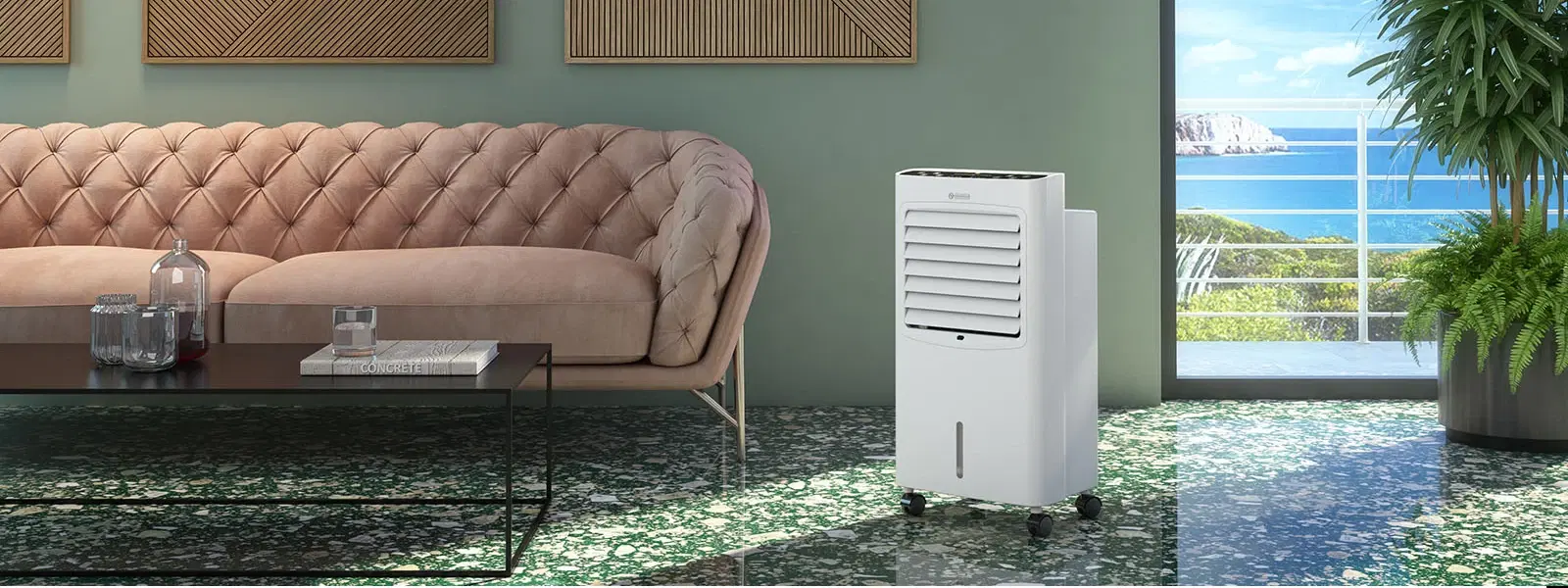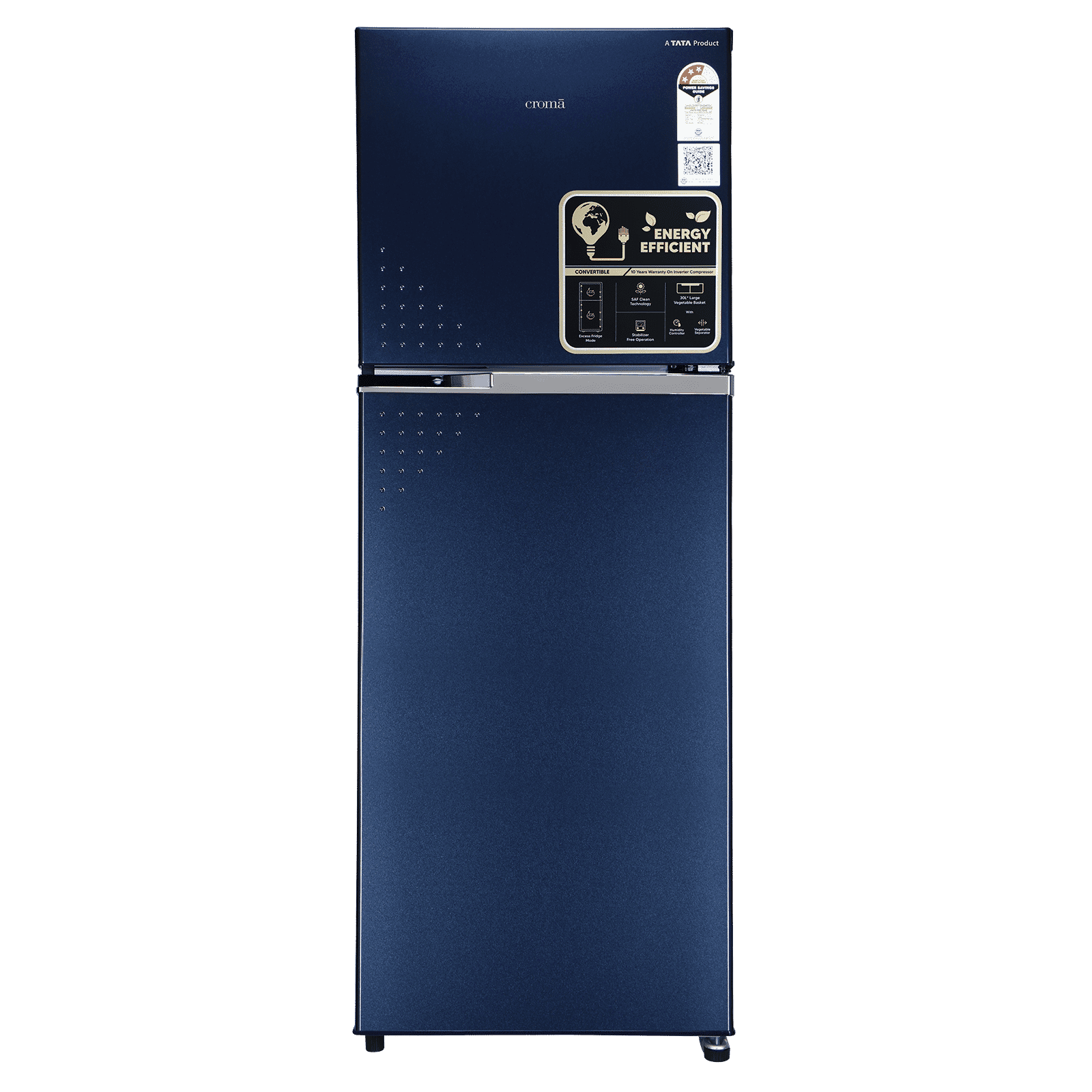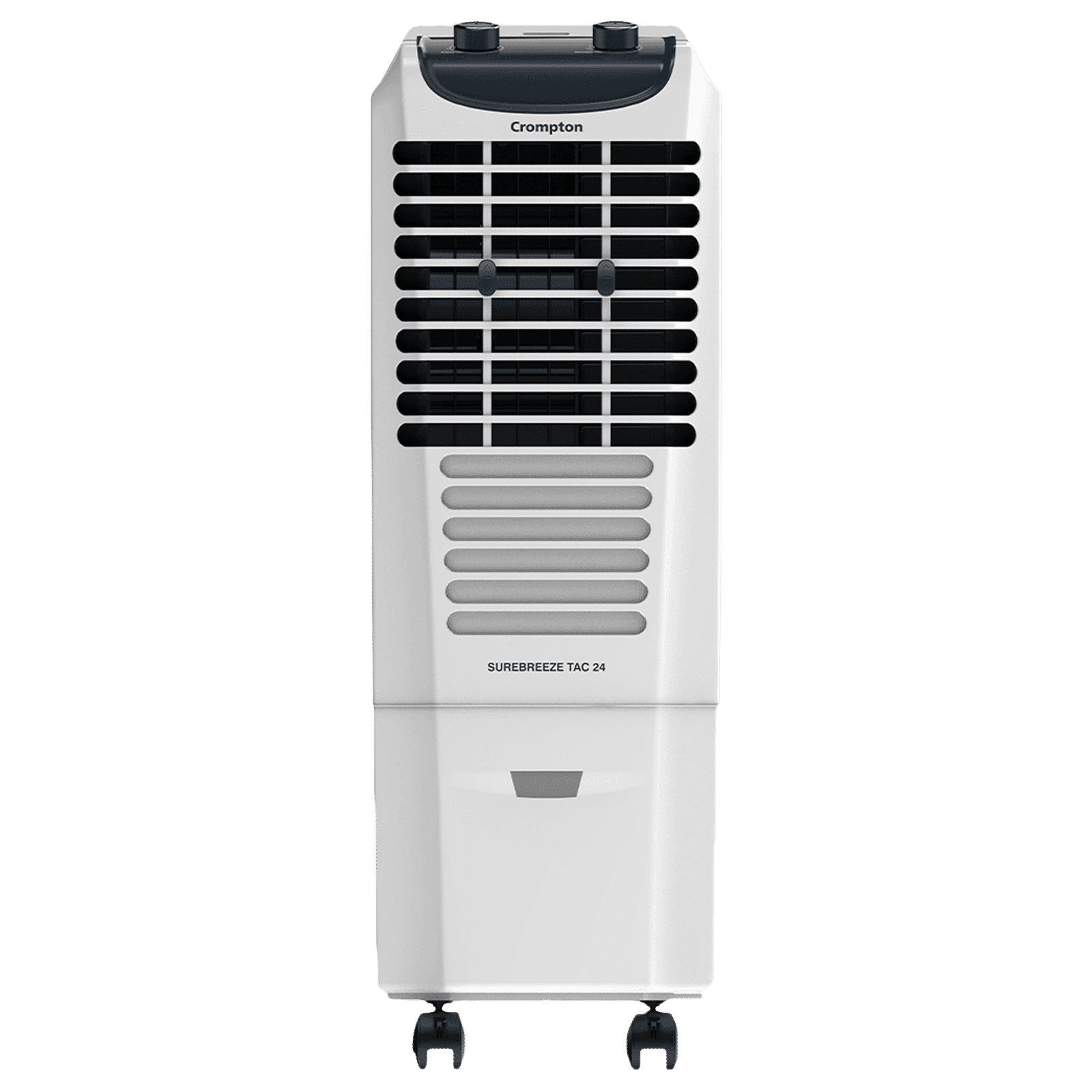
Home Appliances
•04 min read

Buy Croma 290 Litres 3 Star Frost Free Double Door Refrigerator with Inverter Technology (2025 Model, CRLR290FID276258, Ocean Blue) online at best prices from Croma. Check product details, reviews & more. Shop now!
Ever wondered how much electricity your air cooler consumes and whether it's the most energy-efficient option for your home? Understanding the air cooler power consumption chart is essential for making informed decisions about energy usage and optimising your electricity bills. In this article, we break down the power consumption of air coolers, provide a step-by-step guide to reading the charts, and answer common queries to help you choose the right, energy-saving air cooler for your needs.
Power consumption refers to the amount of electrical energy an air cooler uses to operate, often measured in watts. By understanding the wattage, voltage, and energy efficiency ratings of your air cooler, you can determine how much electricity it consumes over time. This not only affects your monthly electrical bills but also influences the overall energy efficiency of your home appliances. An air cooler power consumption chart is a useful tool to visualise and compare these figures across different models, making the decision process much clearer.
Several factors influence the power usage of air coolers. The cooling capacity, fan speed settings, motor type, and water pump efficiency all play significant roles in determining electricity consumption. For instance, high-performance air coolers with powerful motors may use more electricity compared to low power air coolers engineered for efficiency. Even though air coolers typically consume more electricity than basic fans, they still offer a more energy-efficient alternative to traditional air conditioners, provided you choose models with optimal air cooler energy efficiency ratings and energy-saving features.
An air cooler power consumption chart presents data such as wattage, hours of usage, and estimated electricity costs. Start by examining the wattage of each model listed, which indicates the rate at which the appliance uses energy. Next, review the expected usage hours to understand how the device performs over a typical day. Finally, calculate the cost using factors like the cost per kilowatt-hour. This step-by-step breakdown can help you estimate the electricity consumption of an air cooler and compare the cost-effectiveness of different models.
Consider this sample chart illustrating popular models: one model may use 75 watts per hour, costing approximately Rs. 0.15 per hour, while another high-power air cooler might use 150 watts per hour, doubling the cost per hour. Such a comparison is an excellent way to visualise the differences in air cooler wattage guide details. This example clearly shows that energy-saving air coolers equipped with efficient motors and components offer significant advantages in reducing the air cooler energy consumption comparison, especially in households focused on lowering their energy bills.
Did You Know?
Using a low power air cooler with energy-efficient features can reduce electricity costs by up to 50% compared to traditional models. Always check the air cooler power rating before purchasing!

Buy VOLTAS Thunder 110 Litres Desert Air Cooler with Thermal Overload Protection (3 Speed Control, Dark Grey) online at best prices from Croma. Check product details, reviews & more. Shop now!
Calculating the cost of running an air cooler is straightforward. Use the formula: (Wattage × Hours Used × Cost per kWh) ÷ 1000. For example, if your air cooler uses 100 watts and runs for 8 hours a day, with the cost of electricity at Rs. 7 per kWh, the calculation would be (100 × 8 × 7) ÷ 1000 = Rs. 5.6 per day. Small changes in wattage or usage hours can significantly affect your monthly electricity bill.
Different models, such as desert coolers versus personal air coolers, have varying energy needs. An air cooler energy consumption comparison often shows that while some high-performance coolers may be better for large spaces, low power air coolers are ideal for smaller rooms or personal usage. This distinction is critical when considering the overall electricity consumption of air coolers and aligning with your specific cooling requirements.
Air cooler energy efficiency is a measure of how well a unit converts electrical power into cooling output. This efficiency is determined by factors such as the design of the cooling system, the quality of the motor, and additional energy-saving features. Certifications like Energy Star or equivalent ratings are valuable indicators of a model’s overall performance. Striving for high energy efficiency reduces overall power usage of air coolers, which is particularly beneficial for families aiming to minimise their electricity bills without compromising on comfort.
Selecting an air cooler with the appropriate power rating is essential. A model with a lower wattage is more efficient for smaller rooms and personal spaces, while high-power air coolers may be necessary for larger open areas. The air cooler power consumption chart can provide a clear insight into the technical specifications and expected performance of each model. Matching the power requirements of the air cooler with your room size and cooling needs not only aids in energy-saving efforts but also contributes to long-term cost savings on your electricity bill.

Buy Crompton Surebreeze 24 Litres Tower Air Cooler with Overload Protection (4-Way Air Deflection, White & Black) online at best prices from Croma. Check product details, reviews & more. Shop now!
Air coolers typically consume between 50 to 150 watts per hour, depending on their size, type, and features.
Yes, air coolers generally consume more electricity than fans due to additional components like water pumps and higher wattage motors.
Yes, a device with a 2000W power rating consumes a significant amount of electricity. Running it for just one hour could result in 2 kWh of usage.
A 70-watt fan uses approximately 0.07 kWh per hour, making it a very energy-efficient option compared to other appliances.
Understanding the air cooler power consumption chart is a practical way to manage your electricity consumption and ensure you opt for energy-efficient devices. By familiarising yourself with terms like wattage, voltage, and energy-saving features, you can make smarter decisions that benefit both your budget and the environment. Whether you are comparing the air cooler electricity cost calculation of two models or looking into the overall energy consumption of an air cooler, the key is to align your appliance choice with your room size and cooling needs.
This detailed guide is designed to empower you with the knowledge necessary to make sound choices when purchasing an air cooler. With clear explanations and practical examples, you can see how even small differences in specifications can result in significant cost variations over time. Remember that using an energy-saving air cooler not only helps in reducing your monthly electricity bill but also contributes to a greener lifestyle.
Explore further insights about home appliances and innovative energy solutions that simplify your shopping experience and add value to your lifestyle. With reliable after-sales support, services like express delivery for orders placed before 6 PM, and the opportunity to earn NeuCoins on every purchase, managing your home’s energy needs becomes hassle-free and rewarding.
By understanding the power usage of air coolers through detailed, accessible charts and calculations, you are now better equipped to balance comfort with efficiency. This ensures not only immediate savings on electricity bills but also long-term benefits in terms of environmental impact and smart home management.